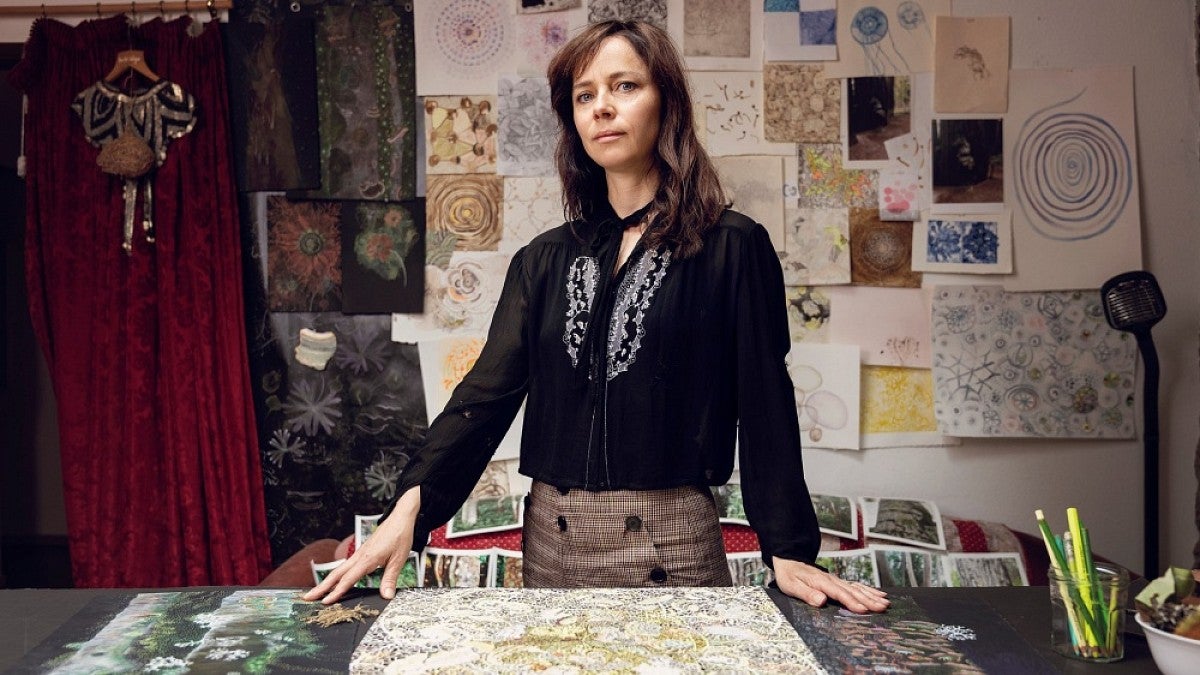Artist Claire Burbridge draws magical worlds in “Pathways to the Invisible,” a new exhibition at the University of Oregon’s Jordan Schnitzer Museum of Art.
With an almost microscopic examination of nature, she creates intricate explorations of the balance and cycles of ecosystems.
“We recognize the sources of her creations — trees, flowers, plants, fungi, insects and more — but her subjects morph from realistic depictions into heightened realities,” said Jill Hartz, curator of the exhibition and former executive director of the museum. “Her work encourages us to look at nature in a fresh way and appreciate the power of the creative spirit.”
On view from Jan. 15 to April 19, the exhibition features works produced since 2015. A catalog, including an interview with Burbridge and an essay by Emily Shinn, the museum’s Curatorial Extern in American and European Art, accompanies the show.
Burbridge, Hartz and Shinn will talk about the exhibition and the artist’s work on Wednesday, Jan. 15, at 5:30 p.m.
“I choose to mainly work in pen and ink,” Burbridge said, “as this forces a decisive approach and commitment to problem-solving once the ink is down on the paper. The marks are made up primarily of lines and pointillism. This seems fitting as our physical world is made up of waves and particles, whether animate or inanimate.”
Born in London in 1971, Burbridge grew up on the west coast of Scotland and in rural Somerset, where she attended Wells Cathedral School. She studied for a bachelor’s in fine art and history of art at the Ruskin School of Fine Arts, Magdalen College, Oxford University, before returning to her birthplace to pursue printmaking at Camberwell College of Arts, where she earned a master’s degree.
Initially her medium was sculpture, but in 2010, with her relocation to Ashland, she returned to drawing and a study of nature. Her work has been exhibited nationally and internationally and is in many corporate, museum and private collections. She is represented by Nancy Toomey Fine Art.


